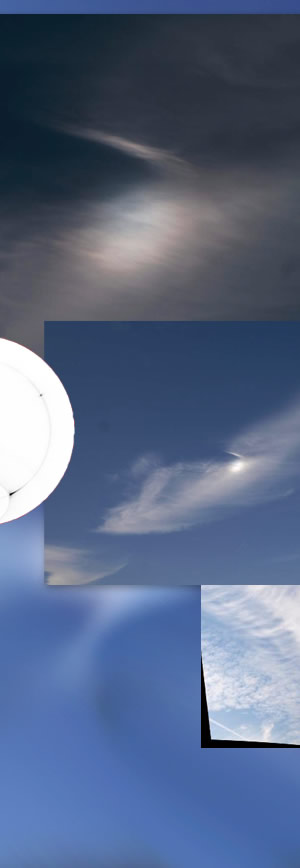Strangely Coloured 120° Parhelion seen Oct 20 by Monika Landy-Gyebnar in Hungary. ©Monika Landy-Gyebnar, shown with permission.
"The parhelion was very bright.. ..[it] was not simply white, but had a faint reddish rim.. .. It seemed to be an oval white spot with the faint reddish colour around it."
120° parhelia (previous OpticsPOD) are colourless because the colour separation when the sun's rays enter the ice crystals forming it is exactly canceled by the separation in the opposite direction as the rays leave.
Colours around bright 120° parhelia were first recorded by Eva Seidenfaden (optics site) and are an example of multiple scattering. White light from the halo is further scattererd by very small ice crystals, too small to form clear halos, or by water droplets in a lower cloud layer. The small particles diffract light to form a corona around the halo. Coronal coloured rims are also seen at the upper and lower edges of the parhelic circle.
|




